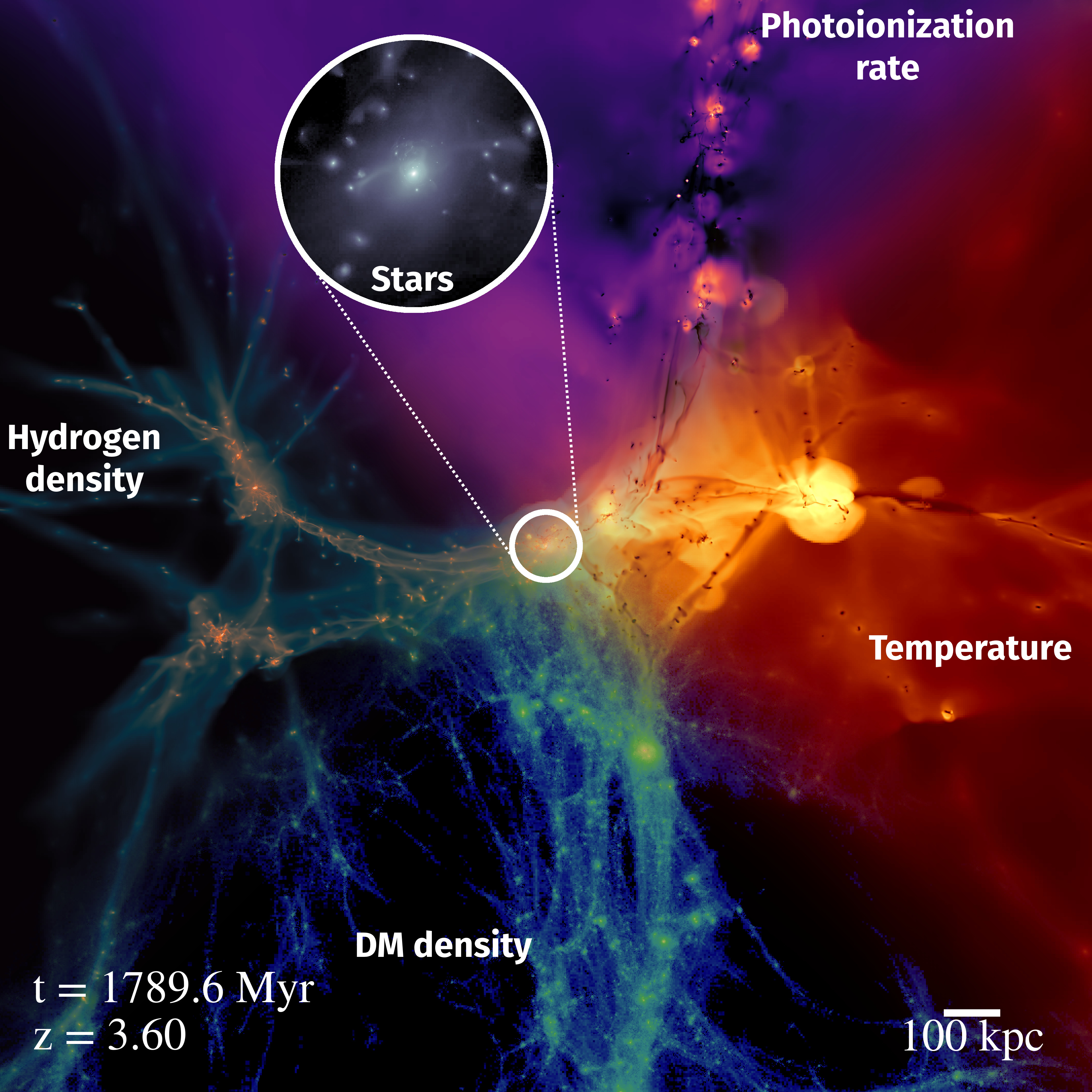Massive galaxies assembled most of their mass in the first 3 Gyr of evolution of the Universe, before the peak of cosmic star formation. Supermassive black holes powering bright quasars are often found at the centre of these massive galaxies. The intense star formation and the accretion onto central supermassive black holes release a tremendous amount of energy in the surrounding gas via various feedback channels, whether radiative or hydrodynamical, strongly shaping the gas flows in and around galaxies, and will affect all neighbouring galaxies. On larger scales, the intense ultra-violet radiation produced by these massive stars and active galactic nuclei reionized the hydrogen in the intergalactic medium by .

To study this fascinating epoch, we introduce the Obelisk project: a radiation-hydrodynamical cosmological simulation following the assembly of a proto-cluster and its environment until . Obelisk relies on state-of-the-art models to describe the physical processes necessary to simulate galaxies and their environment (see the details here). Re-simulating at very high-resolution (34 pc) a region of the large-scale Horizon-AGN simulation, Obelisk simulates the first 2 Gyr of the assembly of what will become a cluster of total mass , similar to Coma cluster, with a resolution high enough to capture the multi-phase structure of the interstellar medium of the 67 500 galaxies identified at .